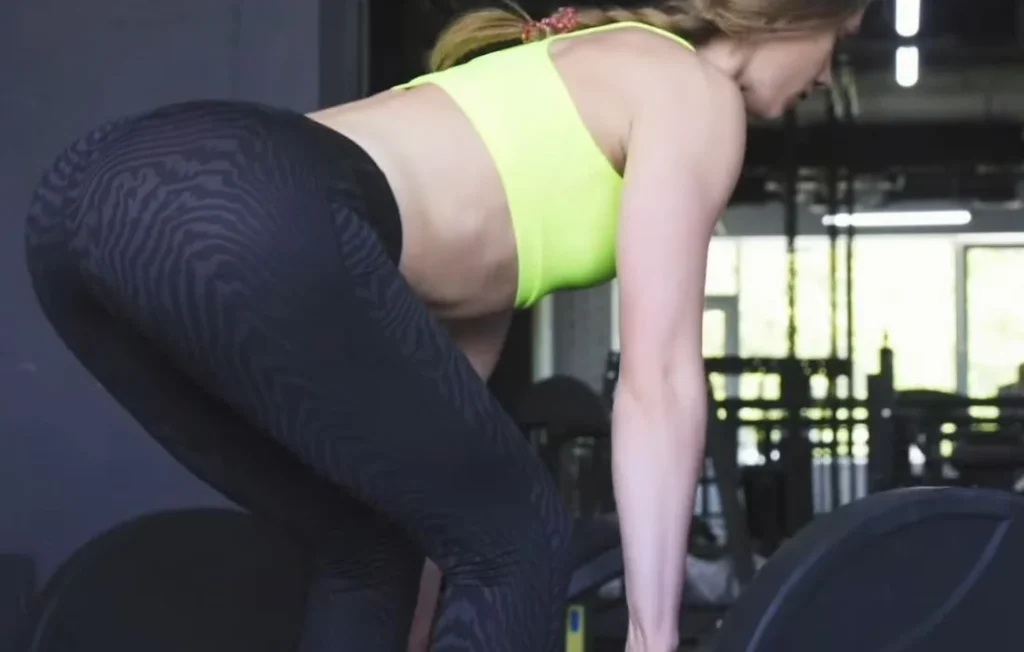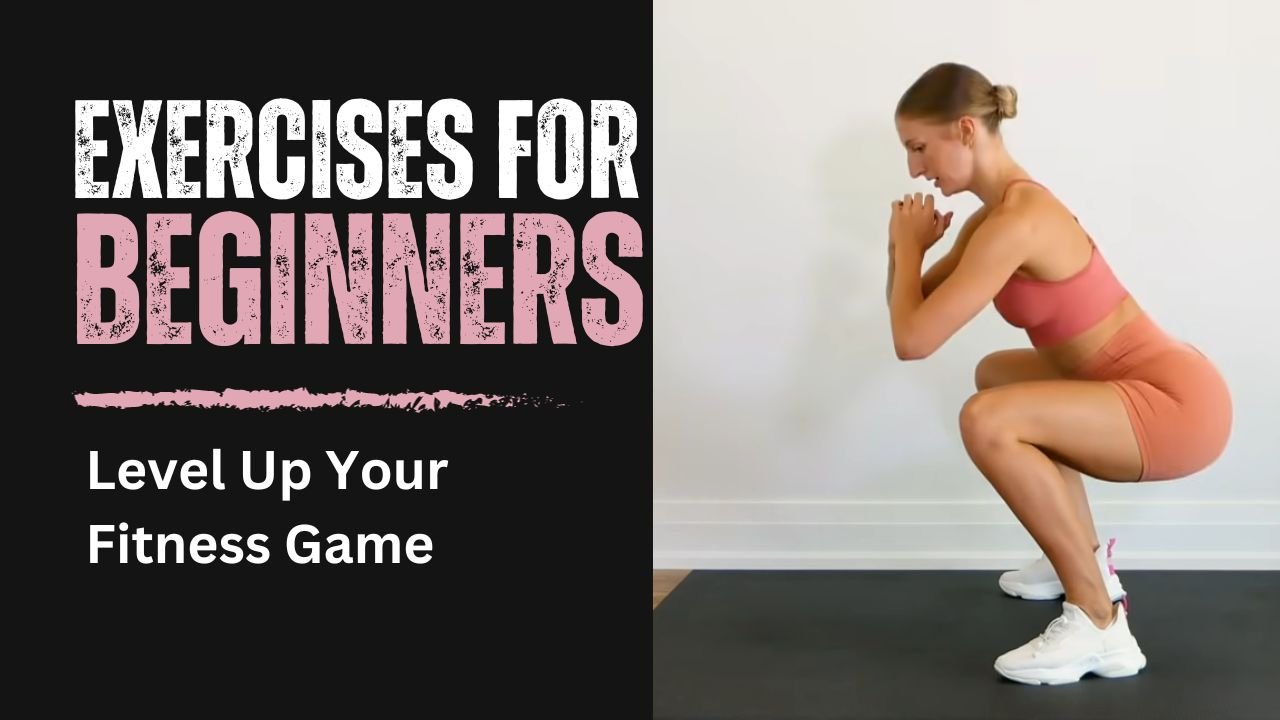Are you ready to embark on a fitness journey that will level up your strength and stamina? Whether you’re a fitness enthusiast looking to enhance your leg workout routine or a complete beginner taking the first steps towards a healthier lifestyle, focusing on your leg exercises is a fantastic choice. In this article, we will guide you through the world of leg workouts, introducing you to the best exercises tailored specifically for beginners.
But why are leg exercises so crucial? You might be surprised to learn that strong legs are more than just a vanity goal. They form the foundation of a healthy and functional body. Throughout this article, we’ll delve into the benefits of leg workouts, explore essential equipment and gear, and, most importantly, present a curated selection of the best leg exercises that beginners can embrace.
Benefits of Leg Workouts
- Build a Solid Base: Your legs are your body’s foundation. Strengthening them provides you with a stable base for all your daily activities and workouts. Whether you’re lifting weights or simply going about your daily tasks, strong legs contribute to better balance and stability.
- Burn More Calories: Leg exercises are known for engaging some of the largest muscle groups in your body, including the quadriceps, hamstrings, and glutes. When you work these muscles, your body burns more calories, not just during your workout but also at rest. This can be particularly helpful if you’re aiming for weight loss or weight management.
- Enhance Athletic Performance: If you’re into sports or physical activities like running, cycling, or even dancing, strong legs are your secret weapon. They provide the power and endurance you need to excel in these activities while reducing the risk of injuries. Whether you’re sprinting down a track or hitting the tennis court, your legs play a pivotal role in your performance.
- Boost Metabolism: Regular leg workouts can stimulate your metabolism. Muscle tissue requires more energy to maintain than fat, so as you build lean muscle in your legs, your metabolism gets a natural boost. This can be especially beneficial for those looking to manage their weight effectively.
- Functional Fitness: Strong legs are essential for maintaining functional fitness as you age. Activities like climbing stairs, getting up from a seated position, or simply walking become more effortless when your leg muscles are well-developed. This can significantly enhance your quality of life as you grow older.
- Injury Prevention: Well-conditioned leg muscles provide support and stability to your joints. This can help reduce the risk of injuries, especially in high-impact sports or activities. Additionally, strong legs can aid in the recovery process if you do happen to experience an injury.
- Improved Posture: Leg exercises often require good posture and core engagement. As you work on your legs, you’ll naturally develop better posture habits, which can have positive ripple effects on your overall musculoskeletal health.
- Mental Health Benefits: Engaging in regular leg workouts, like any exercise, releases endorphins—your body’s natural mood boosters. This can help alleviate stress, reduce anxiety, and enhance your overall mental well-being.
- Versatile Training: Leg workouts are incredibly versatile. They can be adapted to suit various fitness levels and goals, from beginners looking to improve their strength to advanced athletes aiming to enhance their performance.
Leg exercises into your fitness routine aren’t just about aesthetics; it’s about improving your overall health, functional fitness, and quality of life. So, whether you’re chasing that toned look, aiming for better sports performance, or simply striving for a healthier you, leg workouts are an essential piece of the puzzle.
Essential Equipment
To get started with leg workouts, you don’t need an elaborate gym setup. Here’s a breakdown of the essential equipment and gear you’ll need, depending on your fitness level and goals:
Minimal Equipment for Beginners:
- Comfortable Clothing: Start with breathable and flexible workout attire that allows for a wide range of motion. A good pair of moisture-wicking leggings or shorts and a moisture-wicking, well-fitting t-shirt can make a significant difference in your comfort during workouts.
- Sturdy Athletic Shoes: Proper footwear is essential for stability and support during leg exercises. Look for athletic shoes with good arch support and cushioning. If you’re planning to include cardio workouts, consider cross-training shoes that offer versatility for different types of exercises.
- Exercise Mat: An exercise mat is useful for floor exercises like glute bridges or yoga-inspired poses. It provides comfort and grip, ensuring your safety while performing these exercises.
- Water Bottle: Staying hydrated is crucial during workouts, regardless of the intensity. A reusable water bottle will help you maintain your fluid balance and keep you energized throughout your leg workout.
Advanced Equipment for Progression:
While the minimal equipment mentioned above is sufficient for beginners, as you progress in your fitness journey, you may consider investing in some additional gear to add variety and intensity to your leg workouts:

- Dumbbells: Dumbbells are versatile and can be used to add resistance to exercises like squats and lunges. They come in various weights, allowing you to gradually increase the challenge as you get stronger.
- Kettlebell: Kettlebells are excellent for more advanced leg workouts. They can be used for exercises like kettlebell swings, goblet squats, and lunges. The unique shape of a kettlebell adds an extra dimension to your workouts, engaging your muscles differently.
- Resistance Bands: Resistance bands are compact and portable, making them a great addition to your home gym. They can be used to target specific leg muscles and increase the intensity of exercises like leg lifts or lateral leg raises. Resistance bands come in different levels of resistance, allowing for gradual progression.
- Barbell: If you have access to a gym or a home barbell setup, you can incorporate barbell squats and deadlifts into your leg routine. These compound movements can help you build significant leg strength and muscle mass.
Remember that while advanced equipment can enhance your leg workouts, they are not necessary for beginners. You can achieve excellent results with bodyweight exercises and minimal equipment. As you progress and your fitness goals evolve, you can gradually introduce additional gear to keep your leg workouts challenging and exciting.
Best Leg Exercises for Beginners
Now that you understand the importance of leg workouts and have your essential equipment ready, it’s time to dive into the best leg exercises for beginners. These exercises are effective, safe, and can be modified to match your fitness level. Let’s explore them:

Squats: The Foundation
Squats are a cornerstone of leg workouts, engaging multiple muscle groups, including the quadriceps, hamstrings, and glutes. Here are two squat variations suitable for beginners:
Bodyweight Squats
- Stand with your feet shoulder-width apart.
- Keep your chest up, and shoulders back, and maintain a neutral spine.
- Begin the squat by pushing your hips back and bending your knees.
- Lower your body until your thighs are parallel to the ground or as far as you comfortably can.
- Ensure your knees stay aligned with your toes.
- Push through your heels to return to the starting position.
- Repeat for the desired number of reps.
Goblet Squats
- Hold a dumbbell or kettlebell close to your chest with both hands or use a sturdy household item like a gallon of water.
- Stand with your feet shoulder-width apart.
- Maintain a similar squat form as described above.
- Lower your body until your elbows touch your thighs or as far as comfortable.
- Push through your heels to return to the starting position.
- Repeat for the desired number of reps.
Lunges: Balance and Strength
Lunges are excellent for improving balance, stability, and leg strength. Here are two beginner-friendly lunge variations:

Forward Lunges
- Begin by standing with your feet hip-width apart.
- Take a step forward with one leg.
- Lower your body until both knees are bent at 90-degree angles.
- Your front knee should be directly above your ankle, and your back knee should hover just above the ground.
- Push off the front foot to return to the starting position.
- Alternate between legs for the desired number of reps.
Reverse Lunges
- Start in the same standing position as with forward lunges.
- Instead of stepping forward, take a step backwards with one leg.
- Lower your body until both knees are at 90-degree angles.
- Push off the back foot to return to the starting position.
- Alternate between legs for the desired number of reps.
Glute Bridges: Targeting the Glutes
Glute bridges are excellent for isolating and strengthening the glute muscles.

Basic Glute Bridges
- Lie on your back with your knees bent and feet flat on the floor, hip-width apart.
- Place your arms at your sides with your palms facing down.
- Tighten your core and squeeze your glutes.
- Lift your hips off the ground until your body forms a straight line from your shoulders to your knees.
- Hold the bridge position for a moment.
- Lower your hips back down.
- Repeat for the desired number of reps.
Single-Leg Glute Bridges
- Start in the same position as basic glute bridges.
- Lift one leg off the ground and extend it straight.
- Perform the glute bridge using only the grounded leg.
- Lower your hips back down.
- Repeat for the desired number of reps on each leg.
These exercises into your leg workout routine, and remember to start with a weight or intensity level that’s comfortable for you. As you progress, gradually increase the resistance or the number of reps to keep challenging your muscles and experiencing continuous improvement in your leg strength and tone.
Workout Routine for Beginners
Now that you’re familiar with some of the best leg exercises for beginners, it’s time to put together a simple yet effective leg workout routine. This routine will help you get started on your journey to stronger and more toned legs. Remember to perform each exercise with proper form and focus on your breathing. Here’s a sample leg workout for beginners:
Sample Leg Workout
1. Bodyweight Squats
- Sets: 3
- Reps: 10-12
- Rest between sets: 1-2 minutes
2. Forward Lunges
- Sets: 3
- Reps: 10 reps per leg
- Rest between sets: 1-2 minutes
3. Basic Glute Bridges
- Sets: 3
- Reps: 12-15
- Rest between sets: 1-2 minutes
4. Reverse Lunges (Optional)
- Sets: 3
- Reps: 10 reps per leg
- Rest between sets: 1-2 minutes
5. Goblet Squats (Optional)
- Sets: 3
- Reps: 10-12
- Rest between sets: 1-2 minutes
This workout covers a range of leg exercises that target different muscle groups, including the quadriceps, hamstrings, glutes, and calves. Here’s how to execute the routine:
- Warm-up: Begin with a 5-10 minute warm-up to increase blood flow and prepare your muscles for exercise. You can do light cardio like brisk walking or jogging in place, followed by dynamic stretches for your legs.
- Exercise Sequence: Perform each exercise in the order listed, taking the recommended rest between sets. Start with bodyweight squats, then move on to lunges, and glute bridges, and, if you feel up to it, add reverse lunges and goblet squats for extra challenge.
- Proper Form: Pay close attention to your form and posture during each exercise. Keep your movements controlled, and focus on the muscle groups you’re working on. Avoid rushing through the reps.
- Cool Down: After completing the workout, take a few minutes to cool down. Stretch your leg muscles to improve flexibility and reduce the risk of muscle soreness. Hold each stretch for about 15-30 seconds.
- Hydration: Stay hydrated throughout your workout by sipping water when needed. Proper hydration is essential for optimal performance and recovery.
- Progression: As you become more comfortable with this routine, consider increasing the number of sets or reps, adding resistance (like dumbbells or a kettlebell), or exploring more advanced variations of the exercises.
Remember that consistency is key to seeing progress. Aim to perform this leg workout 2-3 times a week, allowing at least one day of rest between sessions to give your muscles time to recover and grow stronger. With dedication and gradual progression, you’ll be well on your way to achieving your fitness goals and leveling up your leg strength.
Safety Tips
Ensuring your safety during leg workouts is of utmost importance. Here are some essential safety tips to keep in mind as you embark on your leg exercise journey:
Proper Form and Posture
- Maintain Neutral Spine: Keep your back straight and maintain a neutral spine during exercises. Avoid rounding or arching your back, as this can lead to strain or injury.
- Knee Alignment: Ensure that your knees align with your toes during squats and lunges. Avoid letting your knees collapse inward, which can strain your knee joints.
- Core Engagement: Activate your core muscles by pulling your navel towards your spine. This provides stability and reduces the risk of lower back injuries.
- Balance: For exercises that involve balance, such as lunges, focus on finding your center of gravity. Use your core muscles to stabilize yourself.
Gradual Progression
- Start Slowly: If you’re new to leg workouts, begin with lighter resistance or bodyweight exercises. Overexerting yourself too soon can lead to muscle soreness or injury.
- Increase Intensity Gradually: As you gain strength and confidence, gradually increase the intensity of your workouts by adding resistance or more challenging variations of exercises.
- Listen to Your Body: Pay attention to how your body feels during and after workouts. If you experience sharp pain, discomfort, or unusual sensations, stop the exercise immediately. Consult a healthcare professional if necessary.
Warm-up and Cool Down
- Warm-up: Always start your leg workouts with a warm-up. This can include light cardio (e.g., jogging in place) and dynamic stretches to increase blood flow and prepare your muscles for exercise.
- Cool Down: After your workout, perform static stretches to improve flexibility and reduce muscle soreness. Focus on stretching the muscles you’ve worked during your leg exercises.
Hydration and Nutrition
- Stay Hydrated: Drink water before, during, and after your workout to stay properly hydrated. Dehydration can lead to muscle cramps and reduced performance.
- Pre-Workout Nutrition: Consume a balanced meal or snack with carbohydrates and protein about 1-2 hours before your workout to provide your body with the necessary energy.
Rest and Recovery
- Rest Days: Incorporate rest days into your workout routine. Your muscles need time to recover and grow stronger. Overtraining can lead to fatigue and increased risk of injury.
- Sleep: Ensure you get adequate sleep as it plays a crucial role in muscle recovery and overall well-being.
Footwear
- Proper Footwear: Wear appropriate athletic shoes with good arch support and cushioning. This helps prevent slips and provides stability during exercises.
- Shoe Fit: Make sure your shoes fit well and are suitable for the type of workout you’re doing.
Consult a Professional
- Fitness Professional: If you’re new to exercise or have specific concerns, consider consulting a fitness professional or personal trainer. They can help you with proper technique and exercise selection tailored to your needs.
- Medical Advice: If you have any underlying medical conditions or injuries, consult with your healthcare provider before starting a new exercise program.
By following these safety tips and prioritizing proper form, gradual progression, and overall well-being, you can enjoy the benefits of leg workouts while minimizing the risk of injury. Remember that consistency and patience are key to long-term success in your fitness journey.
Conclusion
Throughout this article, we’ve explored the benefits of leg workouts, emphasizing their importance in building a solid base, burning calories, enhancing athletic performance, and boosting your metabolism. We’ve also provided insights into essential equipment, whether you’re just starting or progressing in your fitness journey. The best leg exercises for beginners, including bodyweight squats, lunges, and glute bridges, have been introduced to you, accompanied by clear instructions on how to perform them safely and effectively. We’ve also outlined a sample leg workout routine that you can start with, ensuring that you begin your fitness journey on the right foot (pun intended).
Safety has been a key focus, with tips on maintaining proper form, gradual progression, warming up and cooling down, hydration, and the importance of rest and recovery. Your safety is paramount as you embark on this journey towards stronger and more toned legs. Remember that consistency and patience are your allies in achieving your fitness goals. Whether your aim is to improve your balance, build strength, or simply lead a healthier lifestyle, the leg exercises outlined in this article can help you get there. So, lace up those athletic shoes, grab your water bottle, and take the first steps toward a more vibrant and active you. Your future self will thank you for it.

Chris David (Auther)
With my pen as my compass, I embark on a thrilling odyssey through the intricate landscape of health and fitness. In each blog post, I unveil the enigmatic realms of well-being, weaving together evidence-based wisdom, practical counsel, and a sprinkle of motivational stardust to illuminate your path toward boundless vitality and unwavering strength.
